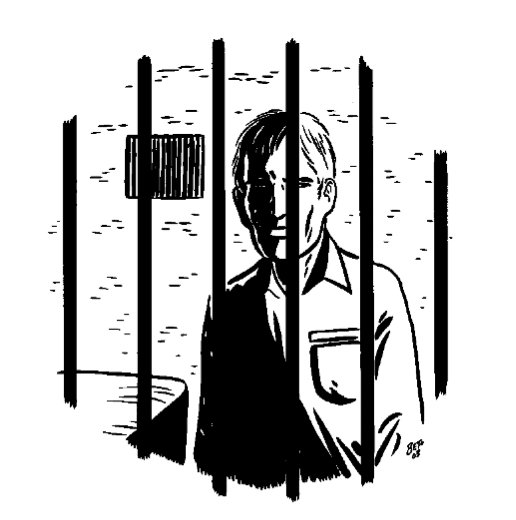“What dark chapters from real life could be dragged up from the records of the prison! What romantic histories have ingloriously closed there! What vain repentances, made too late, what shame, what sorrow, what vain regret! No dark shadow that can be cast on life would be lacking.”
—“Number 1500,” from Life in Sing Sing by Number 1500 (1904)
I went to jail for the first time when I was eight years old. Not that I was some sort of turbo-charged Dennis the Menace or anything: My mom simply escorted my brothers and me to an “open house” at our neighborhood police station when I was that age back in 1968. The officer in charge led us through the entire booking process (it took a week for the fingerprinting ink to wash off) and capped the tour by locking us inside an empty holding cell. I was small, so the barred room seemed spacious enough, but the anxiety I felt when our guide briefly left us behind was far more indelible than any ink. If his mildly sadistic intention was to frighten me out of ever landing in that cell for real, it worked.
Such dubious police p.r. tactics seem unlikely today, when anything short of a surreptitiously videotaped beatdown is considered effective community relations. I’d also like to think that the culturally debilitating reliance on incarceration that’s come to characterize our society in the intervening years has made the prospect of locking people up as a lark that much more distasteful, but all evidence suggests otherwise. Americans seem more receptive than ever to the entertainment value of prison.
Direct experience with a jail cell is hardly a necessity at this point anyway. Through sheer force of repetition, the books, movies, and television shows that use prison as their milieu (if not their subject) have made the reading and viewing public intimately familiar with the conditions of imprisonment. In a singular feat of imaginative engineering, these works have given even those of us with a remote chance of serving time an active set of preconceptions about life behind bars.
This pop-cultural saturation raises any number of philosophical issues. Does the appeal of prison lore lie in its power to illuminate the more disquieting aspects of our penal system that would otherwise remain hidden? Perhaps it’s more that we require a complex metaphorical framework to better understand the nature of freedom—or, worse, that popular depictions of prison furnish a safe, convenient means of participating in that age-old human pastime of watching desperate people tear each other to pieces. Or maybe it’s simply an elaborate way of telling ourselves: There but for the grace of God and the criminal...
You have reached your article limit
Sign up for a digital subscription and continue reading all new issues, plus our entire archives, for just $1.50/month.
Already a subscriber? Sign in





